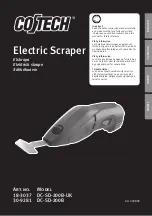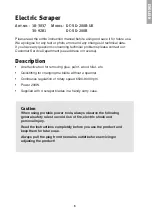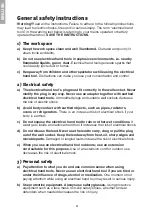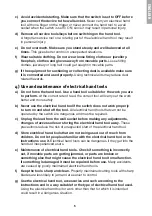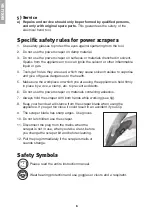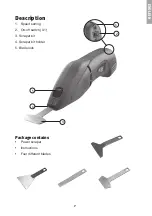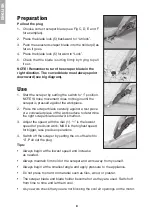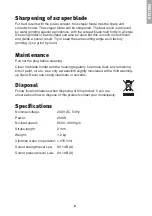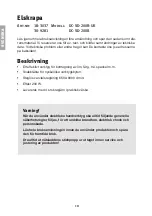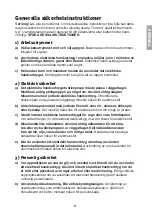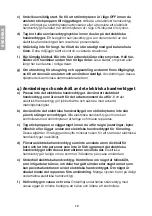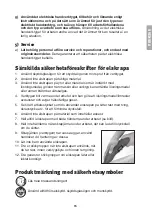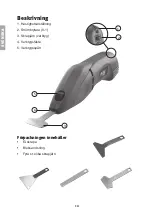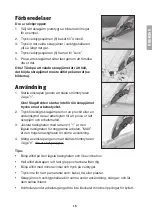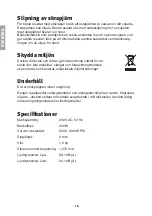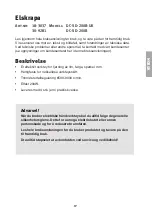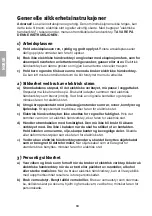
EN
G
LI
S
H
General safety instructions
Warning!
Read all the instructions. Failure to adhere to the following instructions
may lead to electric shocks, fires and/or serious injury. The term “electrical hand
tools” in the warning text below is referring to your mains operated or battery
operated hand tool.
SAVE THE INSTRUCTIONS.
1) The work space
a) Keep the work space clean and well illuminated.
Cluttered and poorly lit
areas invite accidents.
b) Do not use electrical hand tools in explosive environments, i.e. nearby
flammable liquids, gas or dust.
Electrical hand tools generate sparks that
could easily ignite dust or fumes.
c) Keep away from children and other spectators while using the electrical
hand tool.
Distractions can make you lose your concentration and control.
2) Electrical safety
a) The electrical hand tool’s plug must fit correctly in the wall socket. Never
modify the plug in any way. Never use an adaptor together with earthed
electrical hand tools.
Unmodified plugs and suitable wall sockets decrease
the risk of electric shock.
b) Avoid body contact with earthed objects, such as pipes, radiators,
ovens or refrigerators.
There is an increased risk of electrical shock if your
body is earthed.
c) Do not expose the electrical hand tool to rain or other wet conditions
. If
water gets inside an electrical hand tool it increases the risk of electrical shock.
d) Do not misuse the lead. Never use the lead to carry, drag or pull the plug
out of the wall socket. Keep the lead away from heat, oil, sharp edges and
movable parts.
Damaged or tangled leads increase the risk of electrical shock.
e) When you use an electrical hand tool outdoors; use an extension
cord suitable for this purpose.
Use of an extension cord for outdoor use
decreases the risk of electrical shock.
3) Personal safety
a) Pay attention to what you do and use common sense when using
electrical hand tools. Never use an electrical hand tool if you are tired or
under the influence of drugs, alcohol or medication.
One moment of not
paying attention while using an electrical hand tool may result in serious injury.
b) Use protective equipment. Always use safety glasses.
Using protective
equipment such as a face mask, non-slip safety shoes, a helmet and ear
defenders when needed decreases the risk of injury.
Summary of Contents for DC-SD-200B
Page 2: ......

